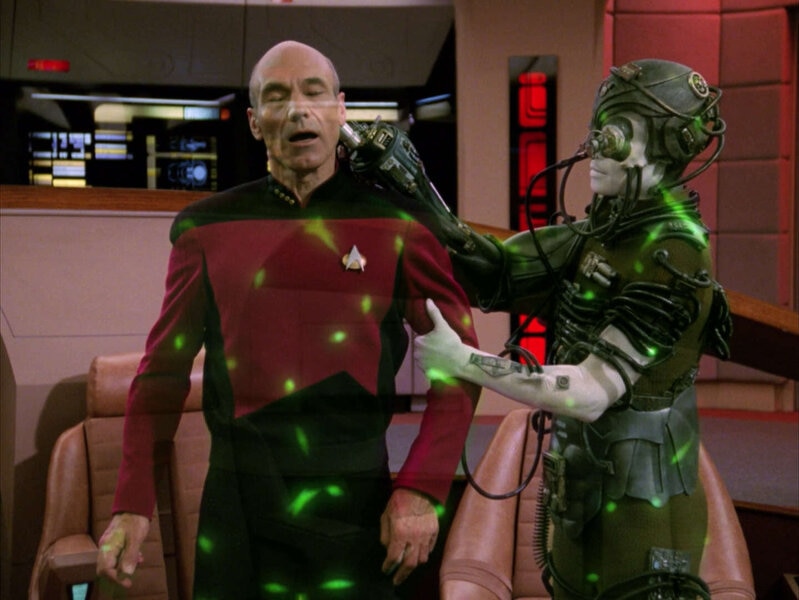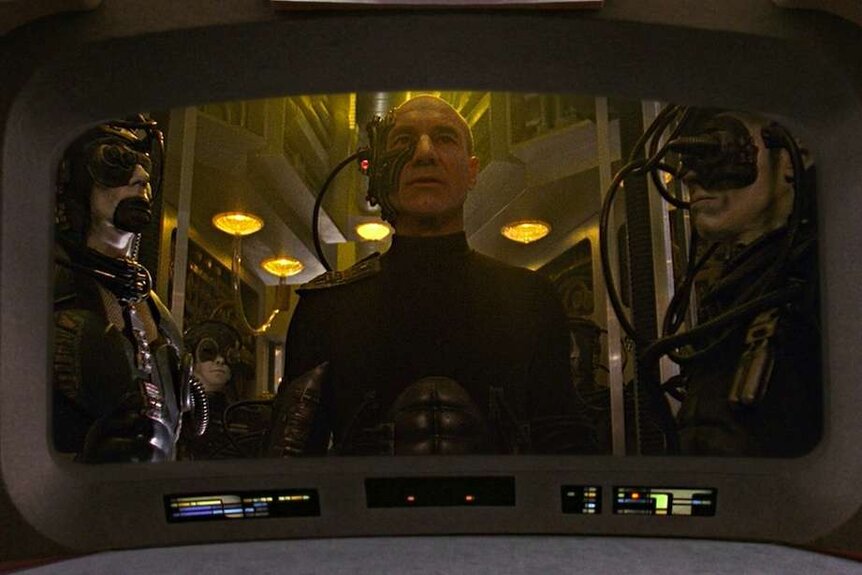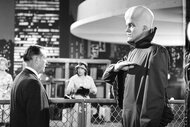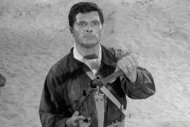Create a free profile to get unlimited access to exclusive videos, sweepstakes, and more!
30 years ago, Star Trek's Borg canon was rewritten for the scarier
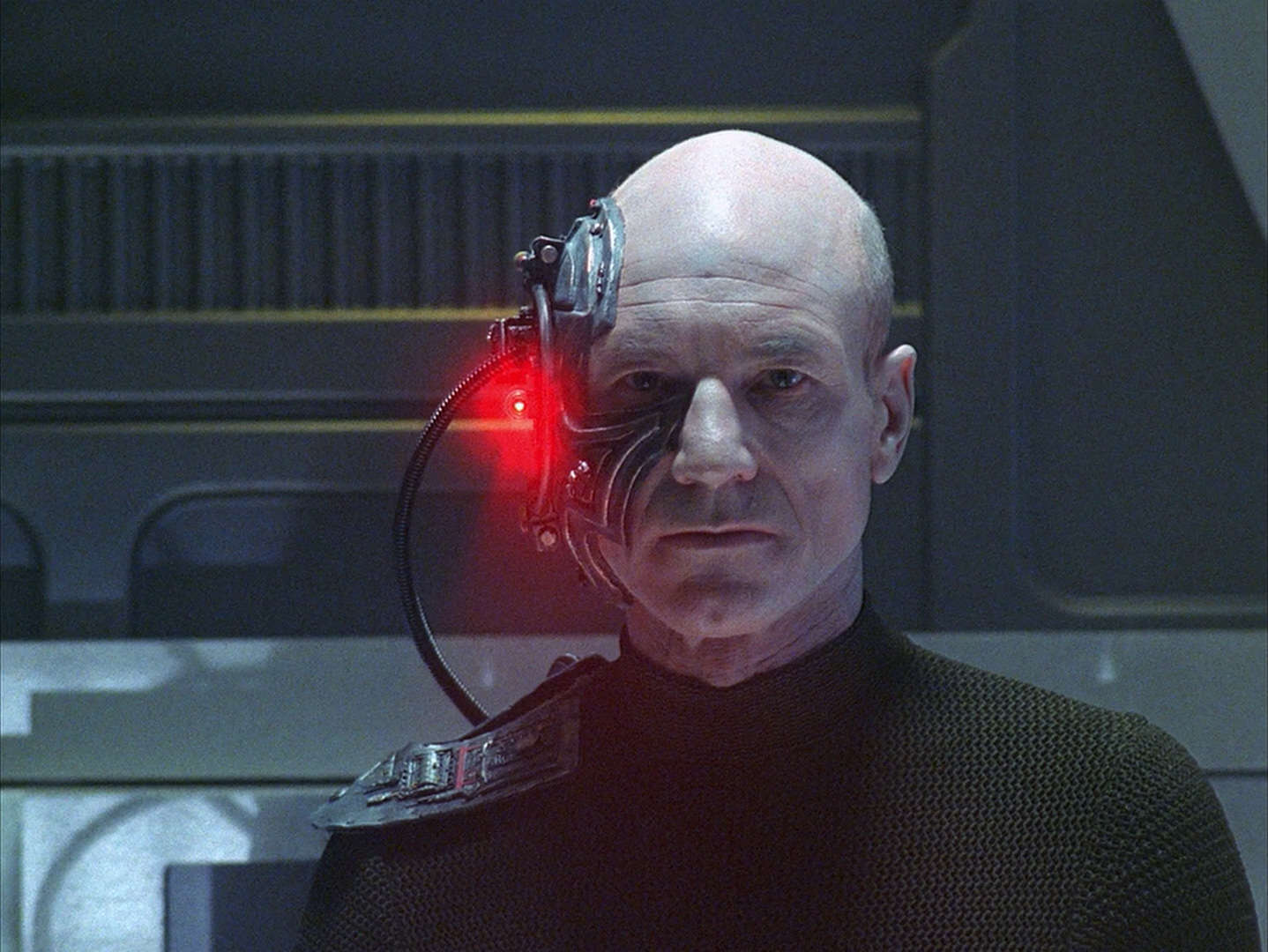
Exactly 30 years ago, everything about Star Trek's Borg Collective changed on a dime with two very brief lines of dialogue. The hivemind cyborg species known as the Borg are, without a doubt, the most famous enemy of the Federation — and Captain Picard specifically. They arrive on the scene reciting their ominous catchphrase, "You will be assimilated," but the bizarre thing is, originally, the Borg weren't interested in assimilating organic lifeforms.
In the beloved and excellent Star Trek: The Next Generation cliffhanger "The Best of Both Worlds Part 1," the Borg underwent a soft reboot that changed everything about Trek canon and influenced the specific plots of First Contact, a ton of Star Trek: Voyager episodes, and, obviously, all of Star Trek: Picard.
"The Best of Both Worlds" — which first aired on June 18, 1990 — contains a moment that you likely forgot about, yet it has massive implications for the Borg and Star Trek as a whole. Here's how it got away with that and why it's still utterly fascinating.
The importance of "The Best of Both Worlds" in the larger scope of Star Trek cannot be overstated. It made multi-part stories in Star Trek viable. It made The Next Generation seem high stakes in a way it never had before. It permanently altered the character of Jean-Luc Picard. But, if you're reading this, you know all of that. Or, at the very least, you remember all of that. We can debate all day long whether it was more chilling when Picard says "We have engaged... the Borg," or when he emerges totally Borgified at the end of the episode and says, "Your life as it has been is over." These are the things you should be talking about because these are the wonderful things the episode is actually about.
However. "The Best of Both Worlds" also tricked you.
It's OK. It tricked all of us. But the truth is hiding in plain sight: That the Borg — as originally designed — were not actually interested in turning human beings into Borg drones. In fact, at the time it aired, it sort of feels like Jean-Luc Picard is the first person the Borg actually wanted to assimilate, specifically.
I know. Borg who don't want to assimilate? You're thinking I'm crazy, or that I should at least double-check Memory Alpha.
But just for a minute, let's make something pretty clear: "The Best of Both Worlds" is the second appearance of the Borg in The Next Generation, following the species' debut in "Q Who?" just one season earlier, and in that first episode, the Borg do not mention wanting to "assimilate" anybody. Compared to what viewers first learned about the Borg in "Q Who?" their sophomore appearance offers a super-fast and full-on retcon that redefines how the Borg operate. When, in "The Best of Both Worlds," the Borg ship specifically asks for Captain Picard to hand himself over, Commander Shelby (Elizabeth Dennehy) — the visiting expert on the Borg — is incredulous. Here's how the scene plays out.
Shelby: "I thought they weren't interested in human lifeforms, only our technology."
Picard: "Their priorities seem to have changed."
Cue record-scratch! Because we have seen so many subsequent episodes and movies in which the Borg's default setting is to assimilate people and turn them into other Borg, this is hard to hear, but it's true. As established in the first Borg episode, "Q Who?," the Borg were not a cyborg species that assimilated other organic life. They just tried to harvest our tech. Q himself called the Borg "the ultimate user," and also cited the fact that the Borg didn't care about human life. Guinan's explanation as to how the Borg "scattered" her people throughout the galaxy was also vague and did not mention anything about being turned into Borg drones.
So, when it came time for "The Best of Both Worlds," TNG hastily rewrote the concept of the Borg — and later iterations of Trek really just hoped you didn't notice. This retcon was utterly successful by the way, because if it wasn't, then the existence of Seven of Nine and literally dozens of other characters and storylines barely make sense.
But let's back up. If the Borg's original purpose wasn't to assimilate biological beings, then how did they make other Borg? In "Q Who?" the Enterprise encounters a Borg ship and Riker and the away team learn that the Borg actually have little Borg babies, and those babies are given cybernetic augmentation as soon as they are born. In 1988's "Q Who?" the concept of the Borg creating more Borg through the process of cybernetic conversation ("assimilation") simply hadn't been written yet. Attentive audiences in 1990 might have been understandably confused if the Borg had done away with those Borg babies in favor of assimilation without Picard's throwaway line explaining the change.
Respectively, the episodes "Q Who?" and "The Best of Both Worlds" take place in the years 2365 and 2366. If you were to take Picard and Shelby's exchange at face value, then the Borg started assimilating people in 2366. But we know that's not true. Or, more accurately, we learned that wasn't true later.
Star Trek: Voyager established that Annika Hansen — aka Seven of Nine — was assimilated into the Borg Collective 10 years prior in 2356. And even with this fact, there's a small wrinkle. By the Voyager era, we learn about something called a "maturation chamber," which is where Borg put non-adults in stasis until they can be fully assimilated. This detail could reconcile the Borg babies from "Q Who?" and the apparent lack of assimilation in 2365, versus the let's-assimilate-everyone fest from that point on.
In other words, Star Trek canon retroactively makes it seem like the Borg have always assimilated organic lifeforms, and that the Enterprise was just confused about the Borg babies in "Q Who?" and, apparently, the Borg just didn't feel like assimilating any humans that particular day.
The looming threat of the Borg had been baked into the canon of TNG since the very beginning. In the Season 1 finale, "The Neutral Zone," the notion that a mysterious alien species was taking big scoops out of planets was mentioned, and in "Q Who?," Data affirms that the planet-scooping effect seems to have been the work of the Borg. At that time, writer and de facto showrunner Maurice Hurley intended for the Borg to be introduced much earlier, and possibly as an insect race. Hurley was also the writer of "Q Who?" and the person who, basically, created the Borg. Again, at this point, the scariest thing about the Borg was their hivemind and their planet-scooping abilities.
However, by the time TNG entered its third season, the writing staff had changed significantly. "The Best of Both Worlds Part 1" was written by Michael Piller, the TNG producer and writer who is largely credited with taking the series in a more character-driven direction. Essentially, Piller took the basic concept of the Borg and added a new layer: assimilation. His motivation seemed to be to create personal stakes for Picard and the crew. This single decision made the Borg much scarier, and also more versatile than they had been before.
In terms of what we saw on screen, the Borg were not cyborg zombies in "Q Who?," but after "The Best of Both Worlds," they were totally cyborg zombies. And the cleverness of this retcon is that it made it seem like that's how things had been all along. Resistance to retcon is futile.
